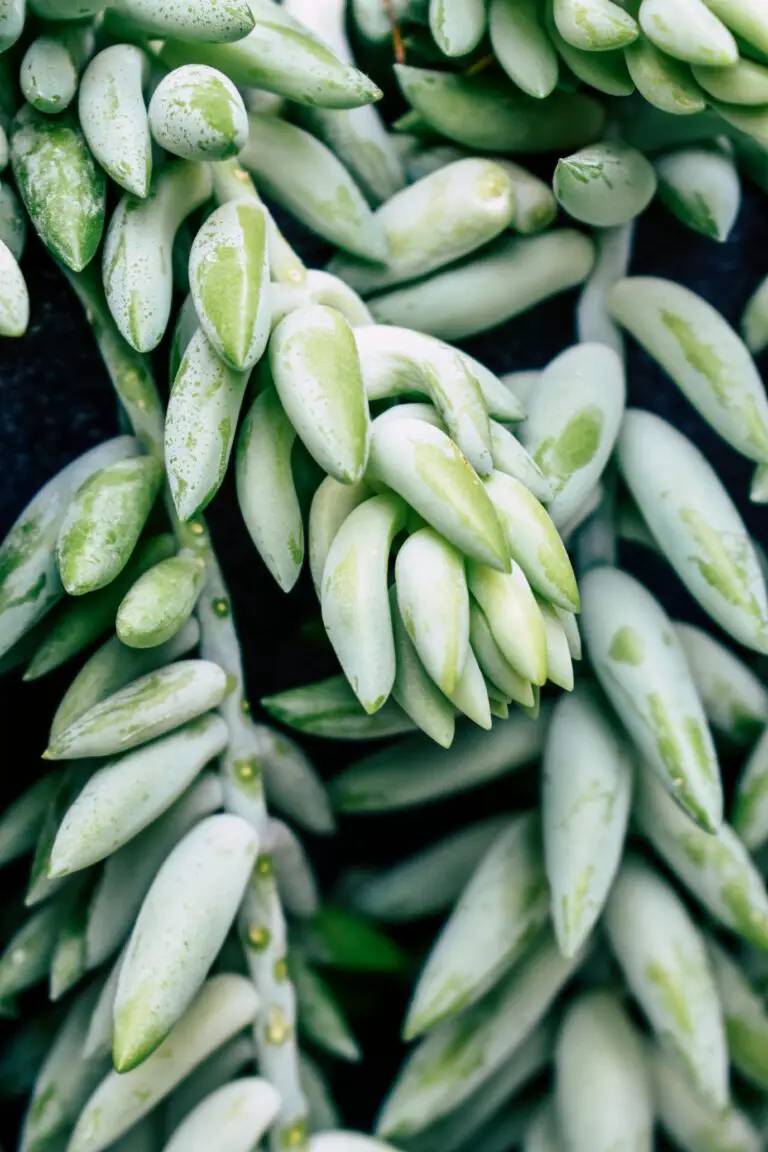Introduction to Sedum and Its Growth Habits
Step into the world of Sedum, the resilient wonders of rocky hillsides and gardens alike. These hardy succulents have mastered the art of survival, effortlessly tackling climates that would send other plants scurrying for cover. As master adapters, they come in a kaleidoscope of shapes, colors, and sizes, making them a favorite among green thumbs and novice gardeners around the globe.
So, what’s the secret to their unyielding vigor? Well, Sedum species can spread their joy far and wide with minimal fuss. It’s not just about growing; it’s about thriving in places you wouldn’t expect. From the dense city roof gardens to the harsh landscapes where only the tough dare to sprout, these succulents know no bounds. They’re like the botanical equivalent of a Swiss Army knife—versatile, reliable, and always a step ahead.
Imagine a single leaf falling onto the soil, a small piece of nature’s puzzle, bidding its time. In a blink, it sprouts new life, giving rise to a fresh Sedum that’s as vigorous as its forebear. This spectacular show of resilience isn’t just limited to leafy magic; Sedum can conquer new terrain through its stems, creeping and crawling, a silent but steady botanical march.
Now, if you’ve ever seen a Sedum in action, you’ll know they’re not all talk. There’s a captivating dance they perform—a slow and graceful unfurling that captivates onlookers and tells a story of perseverance. Have a look at this video illustrating the marvel of Sedum growth in action, a true spectacle of nature:
But don’t think the story ends when winter’s icy fingers reach out. Sedum, with its plump, water-storing leaves, laughs in the face of the cold. As the world around them quiets down, these champions of the plant world stand their ground, offering a splash of greenery when the earth is draped in white.
For those itching to get their hands dirty and dive into the world of Sedum, there’s no shortage of guides and tips to ensure your gardening endeavors bear fruit, or in this case, succulents! One such resource, “Can I Grow Sedum in a Pot? Unearth the Secrets of Container Succulents”, offers a treasure trove of wisdom for cultivating these hardy beauties.
Unraveling the Mystery of Sedum Spread
If you’ve ever marveled at the resilient beauty of Sedum in your garden, you might wonder how these robust succulents proliferate to create such lush landscapes. Much like a detective piecing together clues, we can observe various natural methods that reveal how Sedum spreads.
Picture this: tiny Sedum plants sprouting around a mother plant, a delightful mystery unfolded! Deep beneath the soil, Sedum has a secret weapon, rhizomes. These are essentially underground stems that grow horizontally, sending shoot after shoot to the surface. These shoots then mature into independent, thriving plants, leading to a verdant tapestry of succulents in your garden.
But the masterful spread of Sedum isn’t just subterranean. Another visual clue in our garden mystery story is the sight of fallen leaves. Sedum leaves, when separated from the main plant, can embark on a solo adventure. Simply landing on the soil, these dropped leaves soon unleash their roots, establishing a new plant where they fall. It’s a miraculous yet common occurrence for diligent garden observers.
For those eager to learn more, a helpful video demonstrates how you can take Sedum cuttings and divide Sedum plants for intentional propagation. Glean insights from these visual guides to magnify your knowledge of Sedum spreading techniques.
Whether you’re new to gardening or a seasoned green thumb, understanding the propagation process is invaluable. For instance, from the practical knowledge shared on Elite Gardener, you can ensure the care you provide supports the natural propagation of your Sedum, securing its thriving presence in your garden.
As we dig deeper into the botanical enigma of Sedum, it’s essential to consider the broader picture of succulent care. To broaden your expertise, delve into our comprehensive guide on nurturing succulents, offering you a treasure trove of tips to foster an array of these hardy plants.
Now, with the mystical methods of Sedum spread laid bare, you can approach your garden with a new perspective, appreciating the natural wonders that enable these succulents to thrive and multiply with such impressive resilience.
${‘‘}
Unraveling the Mystery of Sedum Spread
Have you ever been enchanted by a bed of Sedum, with its diverse and thick foliage creating a lush green tapestry as far as the eye can see? It’s like nature’s own groundcover magic. If you’re curious about how sedum spreads, buckle up! We’re about to dive into the world of these fascinating succulents and uncover their propagation secrets.
First off, let’s discuss rhizomes—a word that might sound like something out of a sci-fi novel but is actually quite down-to-earth. Sedum plants develop these horizontal stems beneath the soil, which can spread far and wide. Then, in a beautiful act of replication, new Sedum plants pop up from these rhizomes, creating a continuity of foliage that’s both mesmerizing and practical.
But wait, there’s more! Sedum plants have a cool party trick: dropping leaves that self-plant. Imagine a leaf, tumbling from its stem, landing on the soil, and deciding it’s as good a place as any to set up shop. Before you know it, that single leaf sprouts roots and voila—a new Sedum plant is born. Picture this happening over and over again throughout your garden; it’s almost like Sedum plants have their own little cloning machines.
Watching a on sedum propagation can give you an up-close-and-personal look at how this all comes together. It’s one thing to read about it, but seeing those leaves and cuttings take root in real-time is seriously impressive.
If this whole sedum phenomenon has you eager to learn more about succulent care, take a look at an informative resource on growing and caring for Sedum. There’s a heap of wisdom to be gleaned that will help you turn your garden into a succulent paradise.
For those who are enchanted by this verdant spread and are looking to broaden their green-thumbed horizons, check out our article, Tips for a Thriving Succulent Haven, where you can soak in even more succulent-smart information.
And there you have it, the curious case of the spreading Sedum. Now, you’re well on your way to being a Sedum-pro, able to harness its natural propensity for expansion and enjoy a garden that teems with life and beauty, all year round.
Human-Assisted Sedum Propagation
If you’re looking to become a green-thumbed guru of the succulent world, then getting down and dirty with Sedum propagation is your runway to horticultural heaven. Let’s splice into the succulent secrets of multiplying your beloved Sedums!
Unleashing Potential Through Cuttings
One of the simplest methods to expand your Sedum collection is through the magic of cuttings. Imagine taking a tiny piece of your plant—just a few inches long—and waking up weeks later to find it transformed into a vibrant, individual plant. A simple snip at the stem, a period of callousing, and then a rendezvous with well-draining soil is all it takes. Before you know it, roots emerge like cautious pioneers, and a new Sedum begins its journey.
The Art of Division
Division is not just for mathematicians! Grab your trusty gardening tools and divide your mature Sedum plant like you’re uncovering buried treasure. Gently separating the root ball into smaller sections and replanting them allows each piece to flourish independently. This method doesn’t just give you more plants; it also invigorates the parent Sedum, sparking a new zest for life (and growth!).
Leaf Propagation: A Window into Wonder
Even a single leaf can be the blueprint for a brand-new Sedum plant. Picture this: a leaf falls to the ground and, rather than withering, finds itself in the role of a Phoenix, rising anew. You can replicate this natural marvel by plucking a healthy leaf and placing it atop soil where it will eventually call forth its own roots. It’s like each leaf holds a secret, a promise of life waiting to unfurl.
Witnessing Sedum’s ability to spread and thrive can be an inspiring sight, much like gazing upon a landscape dotted with hardy Haworthias, each one a testament to nature’s tenacity.

Equipped with these propagation techniques, you can transform your garden into a succulent sanctuary. Remember, whether through cuttings, division, or leaves, each method holds the key to unlocking the prolific nature of Sedum. Create, cultivate, and watch your garden blossom into a lush tableau of textural triumphs.
Optimal Conditions for Sedum Growth
Unlocking the secret to lush, sprawling sedum starts with understanding the fundamentals of their ideal habitat. Just like a master chef knows the perfect recipe for a gastronomic delight, a sedum enthusiast needs to grasp the precise balance of soil, sunshine, and hydration that makes these succulent sensations flourish.
Let’s talk dirt—literally! The optimal soil for sedum isn’t your garden-variety loam; these hardy botanicals crave a well-draining mix that mimics their rocky native terrain. Think of it like making the perfect cup of coffee; you wouldn’t let your grounds get waterlogged, and similarly, sedum roots disdain being soaked. A porous mix with sand or perlite will have these plants feeling right at home.

As for lighting, sedum plants bask in the glow of full to partial sun, soaking up those rays like sunbathers on a golden beach. However, just like a fair-skinned vacationer might need a little shade, some sedum varieties appreciate relief from the intense afternoon sun, especially in scorching climates. If you notice your sedum’s leaves broadcasting a distress signal with signs of sunburn, it’s time to simulate a little cloud cover.
Watering these succulents is akin to seasoning a dish—overdo it, and you spoil the succulence. What these plants crave is a ‘sip, not soak’ approach; allow the soil to dry out completely between waterings. Sedum roots are like camels of the plant kingdom, storing water to survive the drought days. This minimalist hydration approach fuels their spread, with water-stress often triggering the growth of new shoots as they search for moisture.
In the real world, getting these conditions just right can lead to sedum that mesmerizes with its robust health. I remember a neighbor whose balcony was the envy of our block, thanks to her sprawling sedum displays. They were a vibrant cascade of greenery, thriving in her homemade compost blend and enjoying the morning sunlight.
Take these tips to heart, and you’ll witness a sedum that not only survives but spreads with an invincible zest. And isn’t that the dream of every gardener—to cultivate a patch of green that’s as tenacious as it is enchanting?
Common Challenges in Growing and Spreading Sedum
Sedum, with their fleshy leaves and striking rosettes, are a wonder in the succulent world—lush, hardy, and less thirsty than a cactus on a cool night. Yet, not all is easy in the land of Sedum. Let’s pull apart the tangled web of common issues that can trip up even the greenest thumb and the plans to tackle them head-on.
One Tough Cookie isn’t Invincible: Dealing with Pests
When it comes to pests, Sedum faces the same six-legged foes as other plants but don’t fret! Picture this: A lush spread of Sedum ‘Autumn Joy’, a buffet for aphids. Quick action is key, and a spray down with soapy water or neem oil can send the buggers packing. Real-life successes abound, where vigilant gardeners have turned an aphid apocalypse into a minor blip, so keep those peepers peeled!
Fungal Foes and How to Foil Them
Dampness can be a downer for Sedum, leading to fungal diseases like root rot. Imagine soft, mushy stems where there were once rigid ones. The fix? Good drainage, my friends! A potting mix akin to a gravelly road for a succulent hitchhiker is the ticket to dry roots and sunny Sedum smiles. Gardeners who’ve been there suggest adding perlite or coarse sand to their soil mix, citing tales of recovery that would make a plant blush with pride.
To Stress or Not to Stress: Environmental Factors
Sedum is tough, but extremes in temperature can have our succulent friends wishing for better days. A Sedum left shivering under a blanket of snow or baking on a sizzling patio may soon become a sad Sedum. Prevention is better than cure, right? So consider the season; shifting plants to shadier spots during a heatwave or insulating them from frost can make all the difference. Sun lovers by nature, Sedum only asks for a bit of consideration to keep their colors vibrant and their spreads sprightly.
The road to robust growth and propagation for Sedum might have a few potholes, but forewarned is forearmed. With the right knowledge, you can ensure your Sedum thrives and spreads its joyful greenery far and wide. Now, let’s dive into a visual guide to help fortify your Sedum savvy!
Sedum Varieties and Their Spreading Rates
Please welcome to the dynamic world of Sedum, a fascinating succulent that’s as versatile as it is easy-going! With a variety of species under its belt, Sedum is the go-to plant for gardeners looking to add a splash of resilience to their green space. But hold on, not all Sedums are created equal! Let’s take an exciting dive into the different species of Sedum and uncover how each one makes its mark in the gardening world with its own unique spreading charm.
Dreaming of a lush carpet in your garden? Look no further than Sedum acre, affectionately dubbed the “Goldmoss”. True to its name, it cascades across the soil with a zeal that could turn any patch of dirt into a sun-kissed sea of gold. But pace yourself – this little number spreads rapidly, earning it a spot on the watchlist for potential invasiveness. If you’re aiming for quick coverage and aren’t shy about a little crowd control, Goldmoss reigns supreme.
If patience is more your style, perhaps the slow and steady Sedum reflexum, also known as “Blue Spruce,” is your match. With its tantalizing blue-green hues mimicking the iconic spruce tree needles, it spreads its beauty at a leisurely pace. This allows you time to savor its growth, a natural tapestry beautifully unfurling with thoughtful gaps for other plants to shine.
Then there’s the garden celebrity, Sedum ‘Autumn Joy’. This species takes spreading to an art form, creating structured clusters that expand outward rather than encroaching everywhere. It’s akin to a skillful painter, strategically placing its flush of pink blooms across your garden’s canvas.
Now, imagine a ground cover that doesn’t just spread; it cascades. That’s Sedum sarmentosum, the “Stringy Stonecrop”. It’s a cascade of greenery that eagerly leaps from pots or walls, adding an element of drama to any garden scene. Isn’t it fascinating how these resilient beauties adapt and exhibit their spreading prowess?
Whether you’re a sedum enthusiast or a gardening newbie, seeing these succulents in action is a wonderful experience. In that spirit, let’s watch a video to truly appreciate how sedum can transform an area with its spreading habit.
Remember, while sedum is generally known for being a friendly plant neighbor, some can be assertive in their quest for garden domination. So, with a bit of planning and proper spacing, you can enjoy the varied spreading rates of sedum varieties, ensuring they complement rather than overwhelm your garden tapestry.
Next time you’re contemplating which sedum variety to add to your outdoor space, consider the traits we’ve chatted about. Whether you yearn for the rapid coverage of Goldmoss, the tranquil growth of Blue Spruce, the controlled elegance of ‘Autumn Joy’, or the dramatic cascades of Stringy Stonecrop, sedum promises to fulfill your garden vision one delightful spread at a time.
The Impact of Sedum Spread on Ecosystems and Landscapes
The charm of Sedum plants is not just in their fleshy, vibrant leaves, but also in their remarkable ability to propagate and colonize new territories. This hardy succulent, often a favorite for its low maintenance and drought resilience, has notable implications for both the ecosystems it invades and the landscapes it beautifies.
Green Roofing Revolution: Sedum Takes Over
Imagine a cityscape where concrete jungles give way to lush, green oases brimming with life. Sedum’s role in green roofing is pivotal in this transformation. Thriving in the harsh rooftop conditions, sedum blankets insulate buildings, reduce urban heat islands, and provide a haven for pollinators. These rooftop gardens are not just aesthetically appealing—they’re biodiversity hotspots that can change the urban ecological narrative.

Xeriscaping Goes Mainstream
In areas where water is as precious as gold, xeriscaping—a landscaping method that reduces or eliminates the need for irrigation—is gaining traction. Sedum, with its water-retaining leaves and ability to flourish without a steady water supply, is an essential player in these sustainable gardens. From the arid southwest to suburban backyards looking to cut down on water bills, sedum is leading the charge in showing how green spaces can thrive with minimal resources.
Yet, it’s not all rosy; the vigor with which sedum spreads can sometimes lead to ecological conundrums. In natural settings, unchecked spread can lead to sedum outcompeting native flora, tweaking the delicate balance of local ecosystems. However, with thoughtful cultivation and management, sedum can be an asset rather than a liability, enhancing biodiversity in controlled environments, and drawing life back into spaces where it had faded.
Each patch of sedum is a testament to nature’s resilience and adaptability—a lesson in how life can persevere and flourish with just a sliver of a chance. As we pave our paths and build our cities, let’s remember the powerful impact such unassuming plants can have on our world, inviting us to rethink our relationship with the environments we inhabit.
Frequently Asked Questions
Curious about the nitty-gritty of how Sedum spreads? Let’s dive into the world of these resilient succulents and uncover the propagation mysteries that make them a gardener’s ally. With these FAQs, you’ll become a Sedum savvy in no time!
Can I Propagate Sedum Easily at Home?
Yes, absolutely! Sedum takes the cake when it comes to low-fuss propagation. Imagine breaking off a piece of your favorite chocolate bar; it’s almost that simple with Sedum. You can snip a stem or pluck a leaf, and with a touch of TLC, you’ll have new Sedum babies sprouting.
What’s the Best Season to Propagate Sedum?
Timing is everything! Spring to early summer is ideal for Sedum propagation. This season provides the perfect conditions for growth – think of it as the plant’s version of a growth spurt!
Do I Need Special Soil for Propagation?
Nope, Sedum isn’t picky. However, they do favor well-draining soil. Consider mixing in some sand or perlite to your potting mix and watch your Sedum take root with enthusiasm.
How Long Does Propagation Take?
Patience, young grasshopper! Within a few weeks to a couple of months, you’ll notice roots forming, followed by new growth. It’s like watching nature’s magic right before your eyes.
Does Sedum Require Lots of Water to Propagate?
The beauty of Sedum lies in its drought tolerance. You won’t need to water your cuttings frequently. Just give them a sprinkle when the soil feels dry, and they’re good to go.
Check out this insightful video for a visual on Sedum propagation:
Any Real-Life Examples of Sedum Propagation Success?
Oh, there are countless stories! Picture this: a novice gardener drops a leaf accidentally, and weeks later, new Sedum life emerges from the soil – it’s propagation success in the most unexpected way.
Will My Propagated Sedum Look Like the Parent?
Most of the time, yes. Sedum’s consistency in reproducing means you can expect your propagated plants to mirror the parent in hardiness and charm.
Can I Propagate Sedum Indoors or Outdoors?
You can do both! Indoors, with a sunny windowsill or outdoors, under the protective shade of a larger plant, Sedum adapts and thrives.
Armed with these FAQs, you’re ready to jumpstart your journey with the ever-versatile Sedum. Go forth and spread the green!



